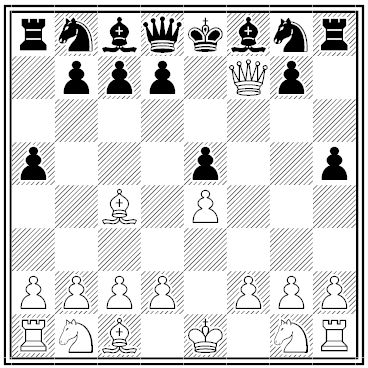
Mike Keith published this remarkable invention in the Journal of Recreational Mathematics in 1975. Suppose a chess game goes:
P-K4 P-K4 B-B4 P-R4 Q-B3 P-R4 QxP
This is checkmate, so White says “I win!” Now if the game score is written out in one column, including White’s exclamation:
P-K4 P-K4 B-B4 P-R4 Q-B3 P-R4 QxP ---- IWIN
… we get a solvable alphametic — replace each letter (and the symbols x and -) with a unique digit and you get a valid sum. (The digits already shown count as numbers, and those numbers also remain available to replace letters.)
This example isn’t quite perfect — the two moves P-R4 are ambiguous, as is the final pawn capture. Keith’s Alphametics Page has an even better specimen, a pretty variation from a real 1912 game by Siegbert Tarrasch. It’s 13 moves long and forms a perfect alphametic with a unique solution.
